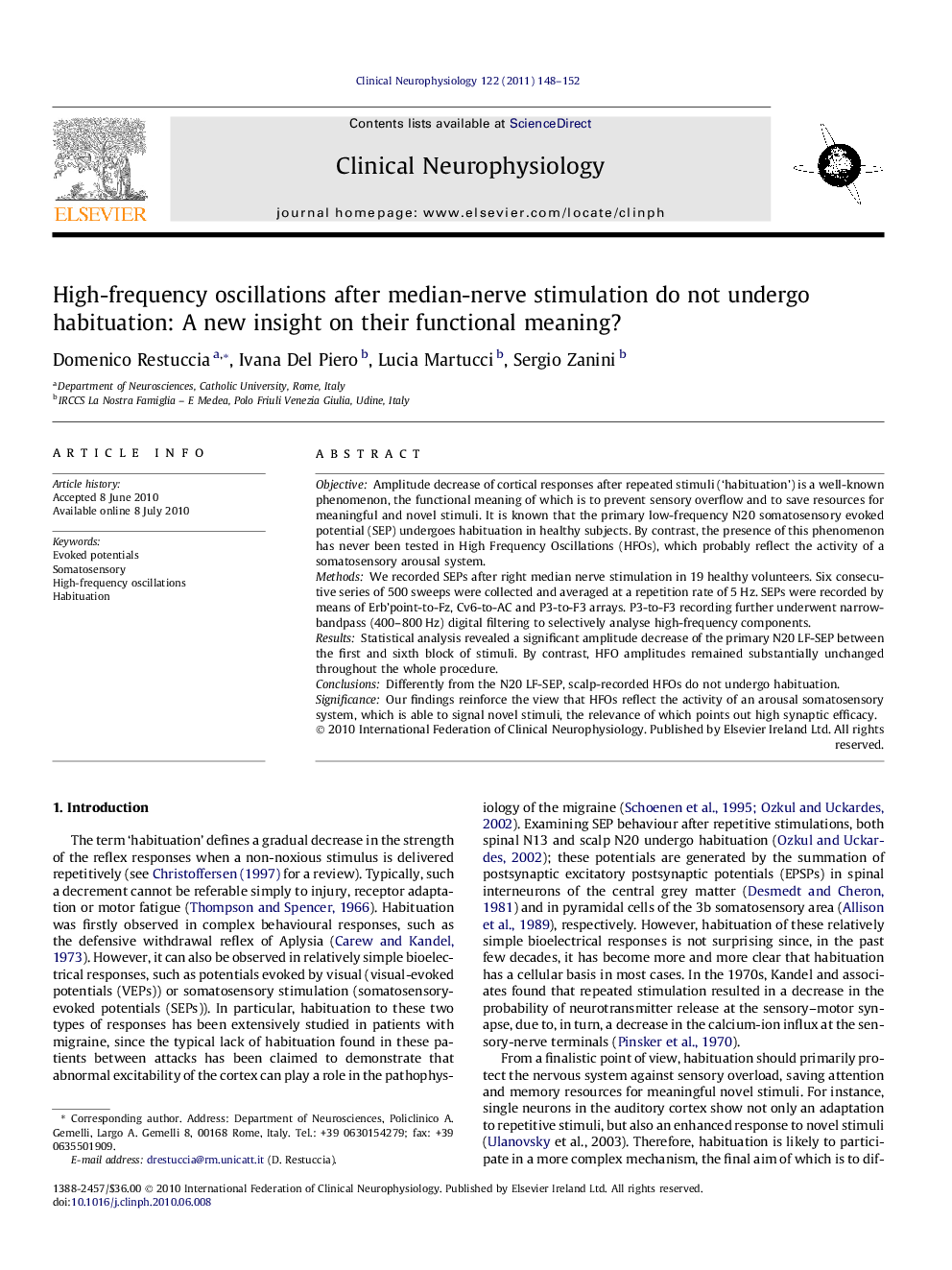| Article ID | Journal | Published Year | Pages | File Type |
|---|---|---|---|---|
| 3044255 | Clinical Neurophysiology | 2011 | 5 Pages |
ObjectiveAmplitude decrease of cortical responses after repeated stimuli (‘habituation’) is a well-known phenomenon, the functional meaning of which is to prevent sensory overflow and to save resources for meaningful and novel stimuli. It is known that the primary low-frequency N20 somatosensory evoked potential (SEP) undergoes habituation in healthy subjects. By contrast, the presence of this phenomenon has never been tested in High Frequency Oscillations (HFOs), which probably reflect the activity of a somatosensory arousal system.MethodsWe recorded SEPs after right median nerve stimulation in 19 healthy volunteers. Six consecutive series of 500 sweeps were collected and averaged at a repetition rate of 5 Hz. SEPs were recorded by means of Erb’point-to-Fz, Cv6-to-AC and P3-to-F3 arrays. P3-to-F3 recording further underwent narrow-bandpass (400–800 Hz) digital filtering to selectively analyse high-frequency components.ResultsStatistical analysis revealed a significant amplitude decrease of the primary N20 LF-SEP between the first and sixth block of stimuli. By contrast, HFO amplitudes remained substantially unchanged throughout the whole procedure.ConclusionsDifferently from the N20 LF-SEP, scalp-recorded HFOs do not undergo habituation.SignificanceOur findings reinforce the view that HFOs reflect the activity of an arousal somatosensory system, which is able to signal novel stimuli, the relevance of which points out high synaptic efficacy.
